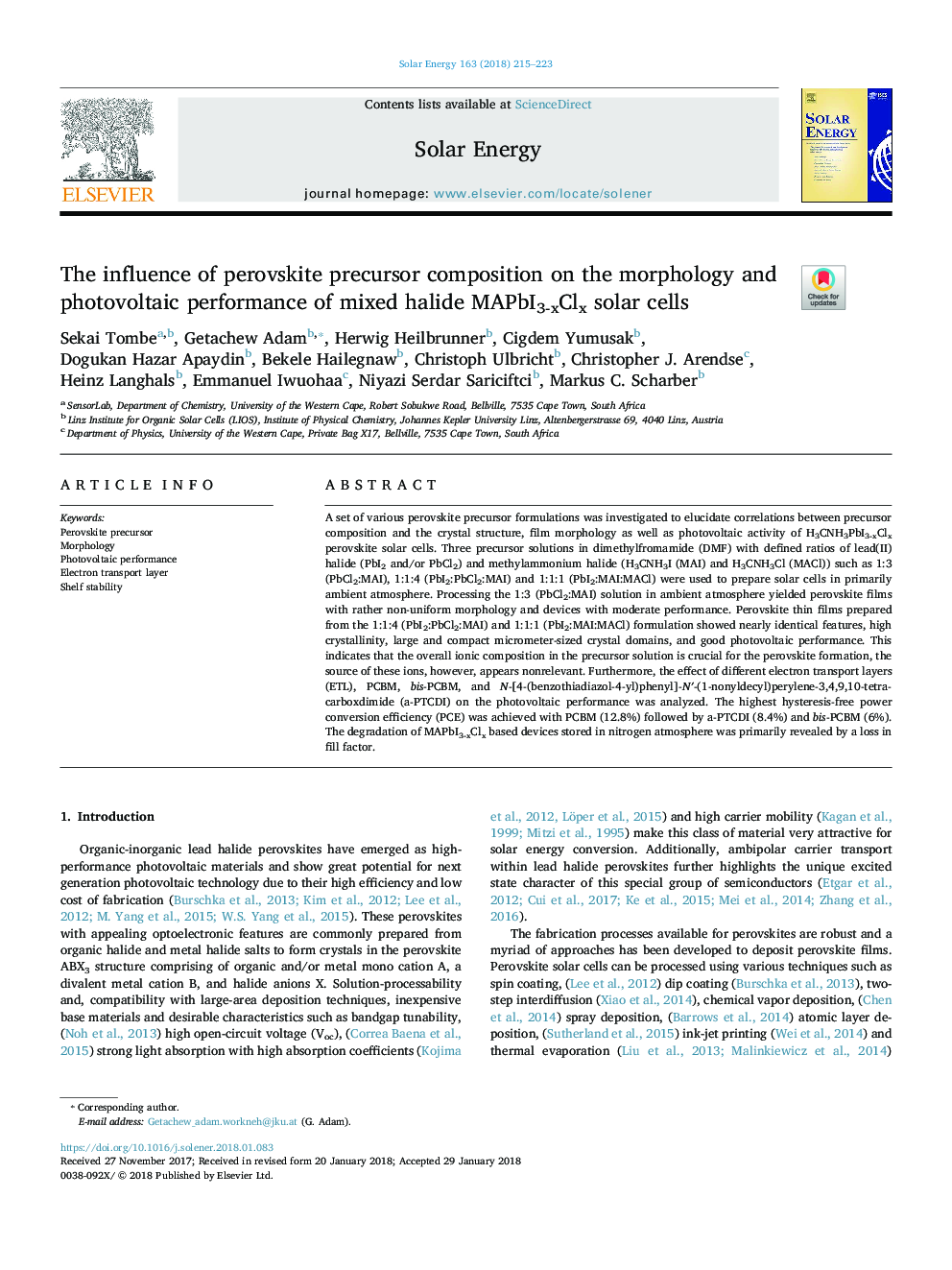| Article ID | Journal | Published Year | Pages | File Type |
|---|---|---|---|---|
| 7935521 | Solar Energy | 2018 | 9 Pages |
Abstract
A set of various perovskite precursor formulations was investigated to elucidate correlations between precursor composition and the crystal structure, film morphology as well as photovoltaic activity of H3CNH3PbI3-xClx perovskite solar cells. Three precursor solutions in dimethylfromamide (DMF) with defined ratios of lead(II) halide (PbI2 and/or PbCl2) and methylammonium halide (H3CNH3I (MAI) and H3CNH3Cl (MACl)) such as 1:3 (PbCl2:MAI), 1:1:4 (PbI2:PbCl2:MAI) and 1:1:1 (PbI2:MAI:MACl) were used to prepare solar cells in primarily ambient atmosphere. Processing the 1:3 (PbCl2:MAI) solution in ambient atmosphere yielded perovskite films with rather non-uniform morphology and devices with moderate performance. Perovskite thin films prepared from the 1:1:4 (PbI2:PbCl2:MAI) and 1:1:1 (PbI2:MAI:MACl) formulation showed nearly identical features, high crystallinity, large and compact micrometer-sized crystal domains, and good photovoltaic performance. This indicates that the overall ionic composition in the precursor solution is crucial for the perovskite formation, the source of these ions, however, appears nonrelevant. Furthermore, the effect of different electron transport layers (ETL), PCBM, bis-PCBM, and N-[4-(benzothiadiazol-4-yl)phenyl]-Nâ²-(1-nonyldecyl)perylene-3,4,9,10-tetracarboxdimide (a-PTCDI) on the photovoltaic performance was analyzed. The highest hysteresis-free power conversion efficiency (PCE) was achieved with PCBM (12.8%) followed by a-PTCDI (8.4%) and bis-PCBM (6%). The degradation of MAPbI3-xClx based devices stored in nitrogen atmosphere was primarily revealed by a loss in fill factor.
Related Topics
Physical Sciences and Engineering
Energy
Renewable Energy, Sustainability and the Environment
Authors
Sekai Tombe, Getachew Adam, Herwig Heilbrunner, Cigdem Yumusak, Dogukan Hazar Apaydin, Bekele Hailegnaw, Christoph Ulbricht, Christopher J. Arendse, Heinz Langhals, Emmanuel Iwuohaa, Niyazi Serdar Sariciftci, Markus C. Scharber,
